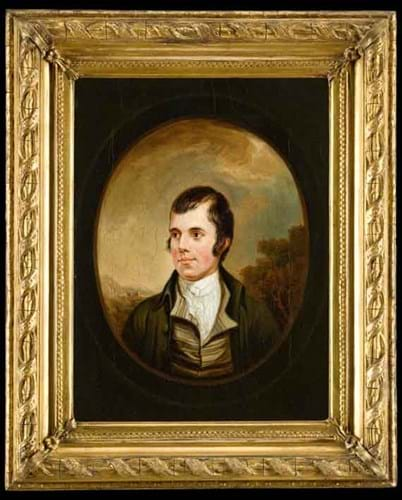
But the owner, who wishes to remain anonymous and who bought the work a couple of years ago at an English provincial auction house where it had not been recognised, says the clock is ticking.
He wants the painting - valued at £2m - to go to the museum permanently, but says the loan agreement stipulates that if a serious buyer comes forward the work must be released for sale.
He hopes that before that happens, heritage funding bodies will join forces with private benefactors to raise the money.
Tax breaks that would arise in the event of such a deal are likely to mean that the museum would be able to acquire the work at a lower price.
The picture, dating to the first decade of the 19th century, is thought to be the fourth version of a portrait painted by Nasmyth after meeting Burns in the late 18th century. The same as other versions in Scottish public collections, it is shown here in its original frame and under its original glass.
Research Project
It has been the subject of recent extensive tests and research by a number of experts on Nasmyth and Burns. Crucially, X-rays taken last year show that the preparatory work beneath the finished paint is typical of Nasmyth, says Dr David Mackie, an 18th century paintings expert from Cambridge University and the leading authority on fellow Scots painter Sir Henry Raeburn. Dr Mackie has endorsed the attribution.
Dubbed the Shaw Burns, the portrait was unveiled on January 25 (Burns Night) at the University of Glasgow's Centre for Robert Burns Studies Conference, where writer Jerry Brannigan revealed the results of his research into its background.
The evidence points to it having once been owned by Sir James Shaw, Lord Mayor of London in 1805. He was originally from Kilmarnock and was a major benefactor of Burns and his widow, says Mr Brannigan.
The portrait is thought to have been commissioned by Burns' publisher William Creech with the intention of using it for the frontispiece of the New Edinburgh edition of Burns' work Poems Chiefly in a Scottish Dialect.
Mr Brannigan believes that the painting was probably sold off along with the rest of Sir James's collection in the 1830s to settle debts.




